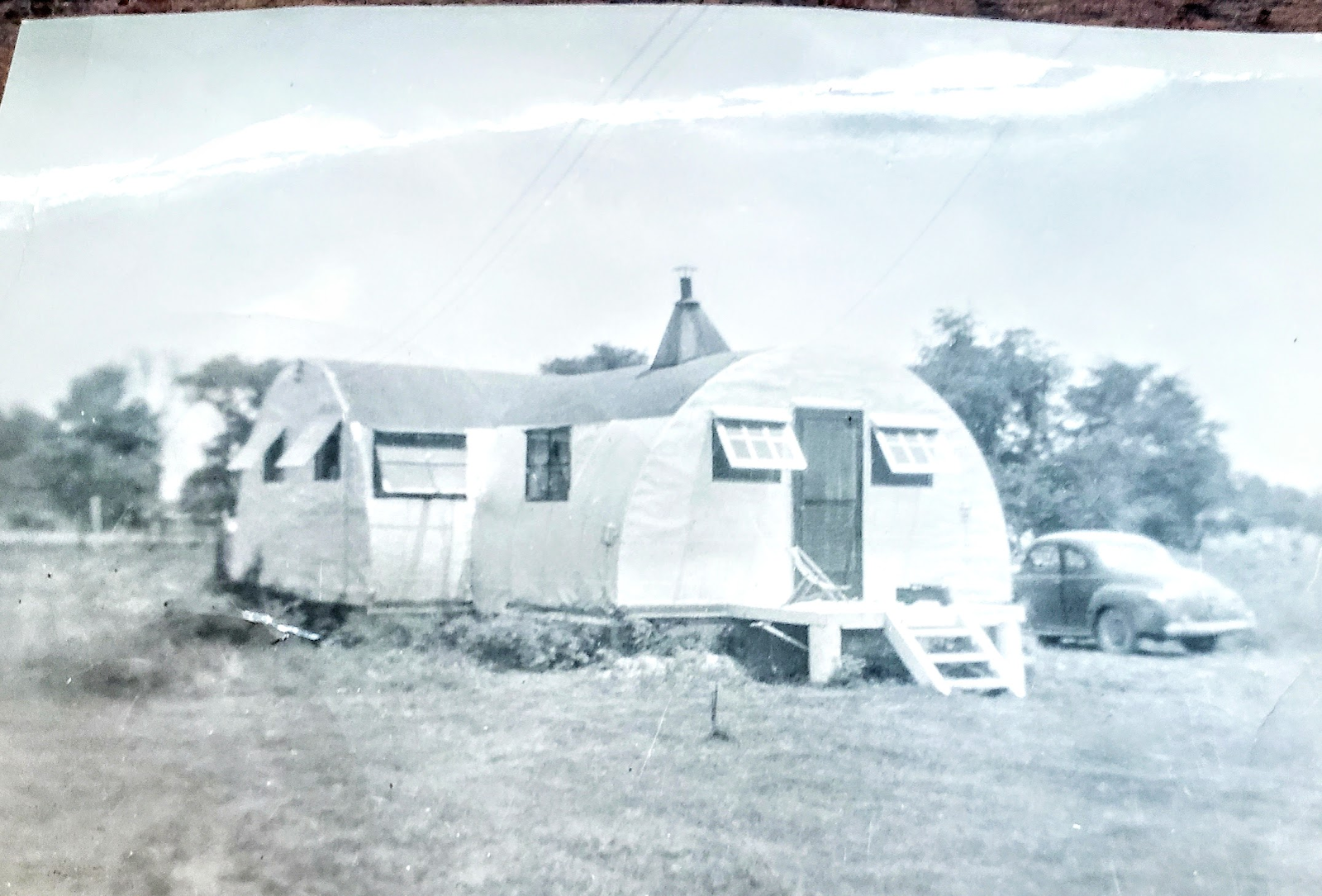I grew up at the end of a coal cinder road on the frontier of
A narrow, twisting two-lane highway,
In the late 1960’s an interstate juggernaut plowed through our neighborhood, taking farms and orchards, fields, creeks and homes in its mindless course. If there were schools, churches or stores in its way they went under too. It cut
But that's too many years passed my story. The challenge of writing spiritual geography is making a place stay in the narrow moment when you were there.
Old Man Stuecker used to swear at his plow horses in German on the other side of
Our first house was a second hand Quonset hut. Dad found it in the classifieds behind a filling station and purchased what looked like a pile of scrap lumber for a nominal sum. He set it up as a T rather than its original I-shape, but it still looked like a barrel buried half in the ground. Its green tar shingle roof stretched in long sheets over the arch to the cinder block foundations on either side, the house lacked proper walls, except at its three ends.
If our Quonset hut suggested frontier poverty, The Big Round Tree spoke of majesty. It stood about two hundred yards off our property and seemed to be owned by no one. It belonged to itself. Had anyone needed a landmark to find his way that oak tree was unmistakable: "Just hang a right at The Big Round Tree and that's
Because it stood alone with no other trees, several of its broad muscular limbs stretched horizontally, parallel to the dry, barren earth beneath it. Like a man who takes as much space as you give him because no one pushes back, this tree annexed land in every direction. Its crest, if not round like a ball, nevertheless arced into the arch of the sky. Its size and strength and dense, impenetrable foliage suggested the eternal life of endless seasons.
In the heat of the summer when I devoured library books – the Box Car Children, The Bobbsey Twins,
I often studied the prospect of climbing The Big Round Tree, and assayed various schemes, but its lowest branches were far above my reach. One limb especially invited contemplation. It was not much higher than the ceiling in your living room, but thick, too much to grab with the claws of one’s hands. Even a grown man could not leap up and clamber onto it; much less, a boy.
One time, thinking we might attain the impossible at last, we threw a rope over that limb, tied the other end around my neighborBruce and hauled him up. He dangled there in the air, kicking his feet and trying to get a hold. For reasons only God could explain someone let go the rope, the rest of us lost our grip, and he fell. We didn't mean to break his arm. He jumped up and ran home bawling, and wore a plaster cast the rest of the summer.
One time, thinking we might attain the impossible at last, we threw a rope over that limb, tied the other end around my neighbor
Like many old things in our neighborhood, the tree was not given a dignified death. First they lopped branches off for power lines to run through it, then chopped off the whole side as they paved our cinders into macadam.
When I came home in late May from the seminary I found its branches and trunk lying on the ground. Its root ball hulked over a massive hole. In another year or two the Caterpillars would return to build a strip mall.
Today, in place of The Big Round Tree, a thick iron pipe, anchored in cement, hoists a large, wind-damaged fluorescent sign. The sign posts the presence and desperate needs of a liquor store.
When I came home in late May from the seminary I found its branches and trunk lying on the ground. Its root ball hulked over a massive hole. In another year or two the Caterpillars would return to build a strip mall.
Today, in place of The Big Round Tree, a thick iron pipe, anchored in cement, hoists a large, wind-damaged fluorescent sign. The sign posts the presence and desperate needs of a liquor store.



1 comment:
There's been much discussion in my family since I posted this video about the tree. Was it an oak or a maple? But no one can remember acorns or helicopters. Perhaps it was an elm. They too have disappeared since the 1950's.
Post a Comment